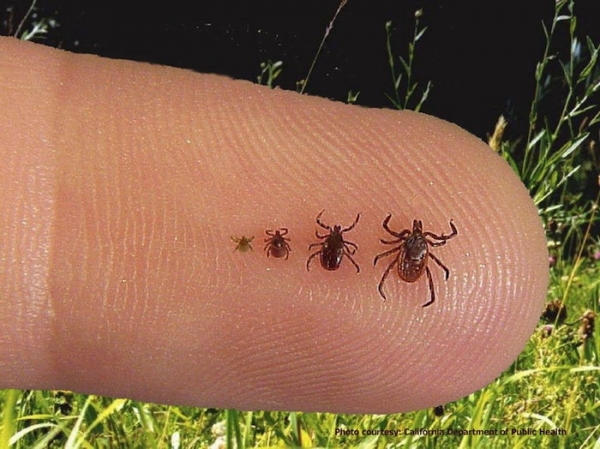BURLINGTON – How easy would it be to find a poppy seed hidden somewhere on your skin?
Lyme disease is transmitted from the bite of infected deer ticks. This time of year the nymphs (immature ticks), which are about the size of a poppy seed, are biting and may spread the bacteria that cause Lyme disease.
Transmission can be prevented if the tick is removed within about 36 hours, but the nymphs are so small that they can go unnoticed if you aren’t looking for them carefully. Most infections occur in the summer months.
A few simple steps can help prevent tick bites and the risk of getting Lyme disease. Start by avoiding areas that are good tick habitat as much as is practical. Ticks tend to be common in tall grass, areas with a lot of brush and leaf litter, and along forest edges.
REPEL – Before you go outside, remember to use insect repellent with up to 30% DEET and treat clothes with permethrin. When possible, wear long-sleeved shirts and long pants and tuck your pants into your socks to keep ticks away from your skin. Inspect yourself regularly when outside to catch any ticks before they bite.
INSPECT – Do daily tick checks on yourself, children and pets. Check yourself from head to toe. While nymphs are most commonly found on the lower legs, they may be anywhere on the body.
REMOVE – Remove ticks promptly. Showering within two hours of coming indoors has also been proven effective in preventing Lyme disease by washing ticks off the skin. The incidence of Lyme disease continues to rise in Vermont. In 2013, there were more than 600 confirmed cases of Lyme disease reported to the Vermont Department of Health. Most illness is in residents of the four southern counties, but cases are becoming more common in the counties on the western side of the state as well. Residents in all counties of Vermont have been diagnosed with Lyme disease.
The first sign of Lyme disease is often an expanding red rash at the site of the tick bite. The rash usually appears seven to 14 days after the tick bite, but sometimes it takes up to 30 days to appear. Not everyone gets the rash, so be on the lookout for other symptoms of early Lyme disease, such as fatigue, headache, fever, chills, swollen lymph nodes, and muscle and joint pain.
Lyme disease can be successfully treated with antibiotics, especially if treatment is given early. Left untreated, Lyme disease may affect other parts of the body, including the heart and nervous system.



